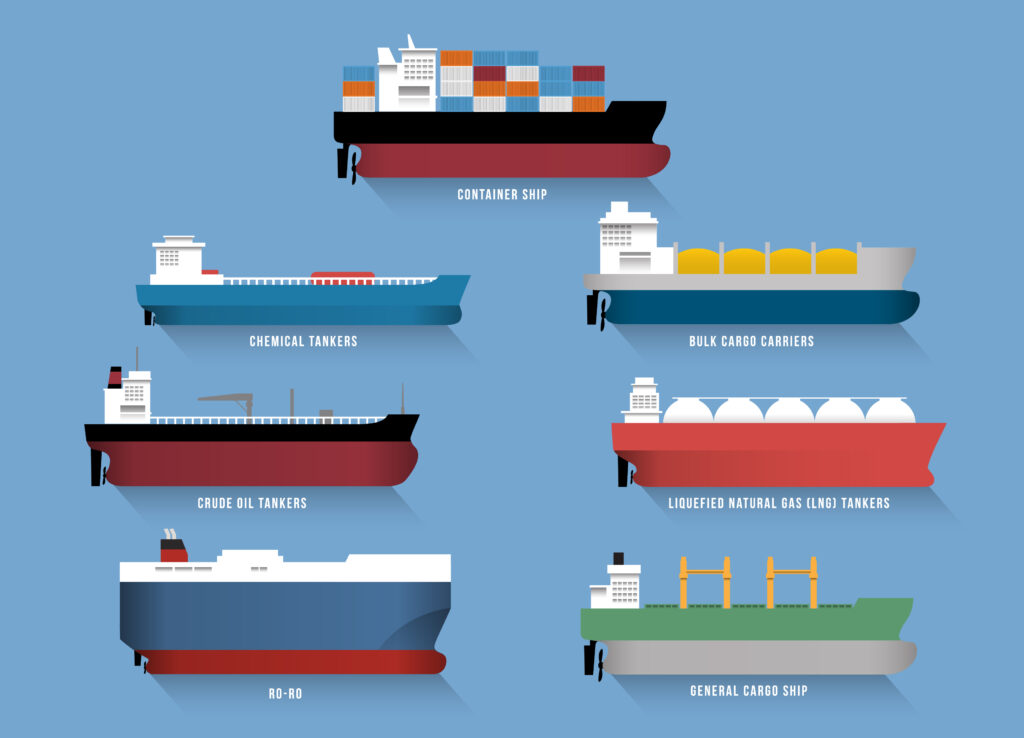Cargoes fall into two basic categories: liquid and non- liquid, termed wet cargoes
and dry cargoes. Each type is carried in different ways for different reasons.
Dry cargoes fall into three main categories: conventional, containerised
and roll- on/roll- off. A conventional cargo, sometimes referred to as breakbulk
cargo, is one which is lifted on and off a ship one piece, or bundle, at a
time by means of cranes or derricks, but not shipped on trailers or in shipping
containers. Such cargoes are carried in conventional ships which, if operated
on a regular basis between advertised ports, provide a conventional service.
These ships are often of the tween deck or multideck type which not only
allows them to carry safely cargoes having many different stowage requirements
but also facilitates distribution in the ship of cargo for several ports of
discharge. Conventional cargo is cargo which very often does not fit into or
onto any of the standard shipping containers by virtue of its length, width or
height. Such cargoes are termed uncontainerable or uncontainerisable.
Containerised cargoes are cargoes carried in shipping containers. There
are a number of standard sizes of container permitting their use in different
transport modes worldwide. Ocean transport is generally effected in specialised
ships which have cells into which the containers are lowered and where
they are held in place by uprights known as cell guides. These ships are known
as cellular containerships. Container barges, also known as cellular barges,
are barges similarly constructed and used for river transport of containers.
Containers can also be carried on conventional ships, often on deck, held
down by means of special container deck fittings.
Roll- on/roll- off, often abbreviated to ro- ro, ships are of various types,
from ferries to car carriers, but all have a loading and discharging ramp, connecting
the ship with the quay. Inside the ship are vehicle decks, often many.
Vehicles are driven on and off the ship over these ramps and are stowed on the
decks. Other types of cargo, ranging from rolls of paper to heavy machinery,
are towed on and off the ship on specialised trailers which are secured to the
deck. A variation is the sto- ro system where cargo is towed onto the ship on
trailers but then lifted off the trailers and stowed directly on the deck, enabling
the specialised trailers to be retained at the loading terminal. All cargo which
is on wheels and which can be driven or towed on to roll- on/roll- off ships is
known as rolling cargo or wheeled cargo.
General cargo, or generals, is cargo consisting of goods unpacked or
packed, for example in cartons, crates, bags or bales, often palletised, but
specifically not cargo shipped in bulk (see below for definition of bulk cargo), on
trailers or in shipping containers although the term general cargo is also used
to describe all dry cargo other than bulk, taking in containerised goods.
General cargo is presented in different ways. Increasingly, such goods are
unitised, that is, grouped into units of regular size, known as unit loads, to
facilitate handling. As there are fewer lifts, unitisation increases the rate of
loading and discharging of a ship. Goods shipped on pallets are examples of
unitisation. Containerisation itself is sometimes said to be a form of unitisation
in that the shipping container is a perfect example of a uniform shape.
Some importing countries require goods to be pre- slung, that is, to have
the slings which were used to load them onto the ship left around them to
simplify and speed up the discharge. This is another form of unit load.
A bulk cargo is a homogeneous unpacked cargo such as grain, iron ore
or coal, very often carried as a full cargo on a bulk carrier. Any commodity
shipped in this way is said to be in bulk.
Wet cargoes may be divided into black products and white products.
Black products are crude oils, such as heavy fuel oils. These are also referred
to as dirty products or dirty petroleum products. White products are
refined products such as aviation spirit, motor spirit and kerosene. These are
also referred to as clean products or clean petroleum products.

